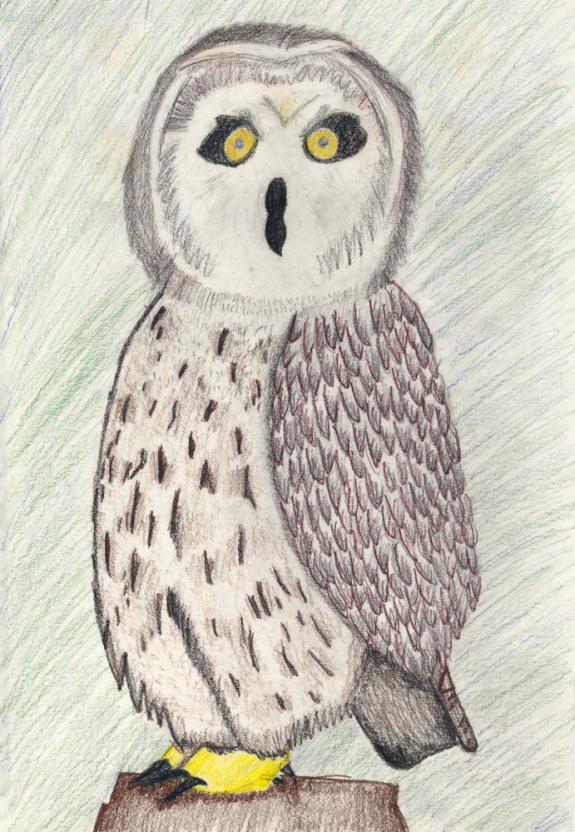Erika Tan, Land O' Pines School
Monmouth County
 Short-eared owl. Monmouth County. Erika Tan
Short-eared owl. Monmouth County. Erika Tan
Short-eared owl
I'm flying a few feet above the ground, and I'm a bit worried about what I'm seeing. There's no food! No rabbits, voles, shrews, moles, or rats. That's what I usually eat. Hi, I'm a short-eared owl, and my species is endangered. I can tell you why, but first, let me tell you a little about my kind.
Short-eared owls live on the ground, unless there's snow. We avoid inhabited areas and we will be found in low elevations. We like living in open prairies, coastal grasslands, tundra, marshes, bogs, savanna, and dunes. You might also want to know what we look like. I am a medium-sized owl. I have large eyes, a big head, a short neck and wide wings. My feathers are brown and my body is streaked. My face is white. The females of my species are slightly bigger than the males. Our yellow-orange eyes are emphasized with black circles around it.
Now let me tell you why my species is endangered. There are about three reasons short-eared owls are endangered. First of all, humans are replacing our habitats with buildings and houses. It's hard to find a place to live! Next, since we live on the ground, or close to the ground, pesticides may harm us, or the food we eat. Lastly, humans are killing our prey. Some of us don't have enough to eat, and it's hard to find food.
Wait! Look over there! It's a rabbit! (It's chow time!) It looks like some stories might have a happy ending after all, even if your species is endangered. Maybe, just maybe, my species will get off of the endangered list someday.
Written by: Erika Tan
Land 0'Pines School, Howell
Teacher: Mrs. Madison




